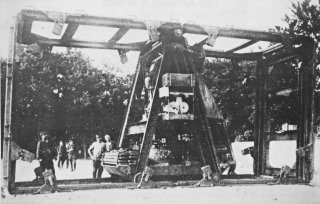World War I History Lesson: Why Early French Tank Designs Were a Disaster
Ungainly, slow, and heavy—but they taught the French Army a lot about tank warfare.
The brutal trench warfare during the First World War proved to be fertile ground for new technology, and fundamentally transformed warfare. Barbed wire was used to create barriers against infantry and to funnel enemy troops into more advantageous places for the defender. This technology become commonplace on the battlefield as did the machine gun—to devastating effect. But perhaps one of the defining weapons of the First World War was the tank.
Arguably one of the most recognizable tanks of the war were the British heavy tanks that were used somewhat successfully to traverse No Man’s Land between trenches. Using their long length, rhomboid shape, and caterpillar tracks, they could traverse craters, ditches, barbed wire, and trenches. Overall, these first tanks were a success—some of their French predecessors were not.
A French Colonel, Jean Baptiste Estienne, said in 1914 that, “Victory in this war will belong to the belligerent which is the first to put a cannon on a vehicle capable of moving over all kinds of terrain.” The French wartime tank program envisioned an armored landship capable of withstanding small arms fire and artillery shells breaking through German defensive lines and over trenches, aided by tens of thousands of infantry. These landships would be armed with internally carried artillery pieces and machine guns that would suppress German defenses. The Boirault machine was an early French attempt to meet these requirements.
Boirault No. 1
The ungainly looking Boirault machine was essentially a single very wide frame that rotated around a centrally located triangular compartment where a low-output engine was housed. The track-frame was propelled by small cogs which were connected to the engine via chains.
Though the Boirault machine did indeed move, its top speed was pitifully slow thanks to its low-output engine. It was not a robust machine either and was unreliable and prone to breakdown. Incredibly, the driver compartment was exposed, a design flaw that would have defeated the entire purpose of the Boirault’s mission.
Thanks to the oversized track it sported, it could traverse wide trenches, but was virtually impossible to steer. Ultimately the Boirault was canceled for a smaller, more mobile prototype, the second Boirault machine.
Boirault No. 2
The second Boirault addressed some of its predecessor’s shortcomings, though the design was fairly similar, with a large track-frame surrounding the driver’s compartment. It was smaller and therefore lighter and had an enclosed driving compartment. It too could easily roll through barbed wire traps, and cross trenches of a comparable width as the Boirault No. 1. Some degree of steering was possible, though the Boirault No. 2 was not at all nimble.
But the Boirault No. 2 suffered the same fate as the Boirault No. 1—cancelation. Both machines were unwieldy and probably would not have withstood artillery shells as their designers had hoped. The following French tanks wisely opted for a more modest tracked system based on American tractor treads that allowed for a much greater degree of steering control. Thankfully for French forces, neither the Boirault No. 1 nor the Boirault No. 2 ever saw combat.
Caleb Larson holds a Master of Public Policy degree from the Willy Brandt School of Public Policy. He lives in Berlin and writes on U.S. and Russian foreign and defense policy, German politics, and culture.
Image: Wikimedia

